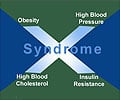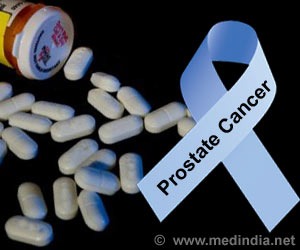New research suggests that a metabolic protein that nourishes cancer cells also activates tumor-promoting genes by loosening part of the packaging that entwines DNA to make up chromosomes.

DNA is packaged in and spooled around histone proteins. The researchers found that PKM2 tags histone H3 with a phosphate group (one atom of phosphorous, four of oxygen) in a specific location called T11.
'No phosphorylation of H3, no tumor'
This phosphorylation leads to activation of the tumor-promoting genes, increased tumor cell reproduction and formation of tumors, Lu said. "If there's no phosphorylation of H3, there's no tumor. It's that crucial to glioblastoma formation."
An analysis of 85 human glioblastomas indicated that higher levels of PKM2 expression in the cell nucleus and of H3 phosphorylation are correlated with shorter survival. A separate analysis showed higher levels of H3 phosphorylation associated with higher grade tumors in a comparison of 30 low-grade tumor samples and 45 high grade glioblastomas.
"Histone 3-T11 phosphorylation has great potential to serve as both a prognostic marker and a guide for the use of PKM2-inhibiting therapies once they are developed," Lu said.
Advertisement
It all starts with EGFR
Advertisement
Cancer cells have high levels of EGFR on the cell surface, relaying growth signals from outside the cell inside. EGFR is itself a target of some cancer drugs.
A series of experiments by the research team uncovered the following molecular steps:
- After EGFR activation, PKM2 binds to histone H3 and attaches a phosphate group at T11.
- This separates another protein called histone deacetylase 3 (HDAC3) from the promoter regions of the genes CCND1 and MYC. HDACs block gene activation.
- With the HDACs gone, histone H3 acquires an acetyl group, which facilitates gene activation.
Blocking phosphorylation prevents brain tumors in mice
CCND1 expresses the protein cyclin D1, a cell cycle regulator. The MYC gene is frequently mutated in cancer, leading to overexpression of the transcription factor Myc, which in turn causes unregulated expression of many other genes.
Mouse experiments of EGFR-driven glioblastoma using reconstituted H3 histones, one normal and one with a mutant version of H3-T11A to prevent phosphorylation by PKM2, confirmed the relationship. Mice injected with normal, or wild type, H3, had an average tumor volume of nearly 40 cubic millimeters, while those with disabled T11A, blocking the phosphorylation point for PKM2, had no tumors.
"Our findings establish PKM2 as a histone kinase, which directly regulates gene transcription and controls cell cycle progression and proliferation of tumor cells" Lu said. Kinases are a class of proteins that attach phosphate groups to other proteins.
Source-Eurekalert












